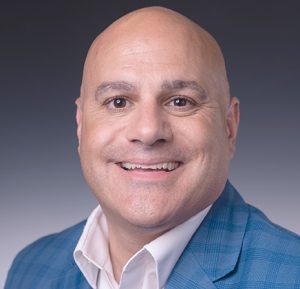The medical school wants the Upstate Simulation Center to “improve patients safety and patient care, as well as build highly trained multidisciplinary health-care teams,” per a news release.
The 8,600-square-foot facility will become a “hub of teaching and training” for students from all areas of the health professions, Upstate contends.
“The Upstate Simulation Center exemplifies our mission and vision to improve the health of our communities through education, biomedical research and health care and to create a healthier world for all,” Dr. Mantosh Dewan, interim president of Upstate Medical University, said in Upstate’s news release. “This special space provides Upstate with the ability to enhance the training of our students and our region’s health care professionals by addressing real-life patient care scenarios through advanced technology, while providing us with the ability to offer immediate feedback on how to best manage patient care scenarios that are faced every day.”
(Sponsored)

How Do Value Conclusions and Value Calculations Differ?
The value of a business is relevant in a wide variety of legal contexts, including divorces, shareholder disputes, mergers, bankruptcy and tax planning. Nevertheless, not every so-called “valuation” service is

How CH Insurance’s BOOST Program Optimizes Group Benefits for Small Businesses
For small business owners, navigating the complexities of group benefits can be overwhelming. Between compliance regulations, cost considerations, and employee expectations, offering a competitive benefits package often feels like a
A SUNY 2020 Challenge Grant provided the funding for the Upstate Simulation Center. Murnane Building Contractors of DeWitt handled the construction on the project, while Glastonbury, Connecticut–based SLAM, which has an office in Syracuse, was the project architect, Upstate said.
Simulation center details
The center, which is located on the lower level of Weiskotten Hall, features a simulated operating room; six simulated acute-care rooms with headwalls which can be “flexed” for additional configurations like intensive care units or outpatient rooms; two 16-person skills and task training rooms which can be de-partitioned to accommodate up to 32 students; a haptics training room; dedicated administrative offices and workspaces to support the center; and the required storage area for all equipment and supplies. It also has four control rooms so that multiple rooms can be used at once or in sequence as well as observational windows.
The patients in the simulation center are eight high-tech manikins that can be programmed to reflect a seemingly endless range of medical complications. They can have convulsions, breathing difficulties, pharyngeal swelling, cardiac issues or another warning sign or symptom that future doctors might face in a real patients
“These manikins are about as life-like as one can get,” Erin Graham, manager of simulation services, said in Upstate’s news release. “They allow us to set specific scenarios, while providing for the safest training of learners.”
Contact Reinhardt at ereinhardt@cnybj.com




